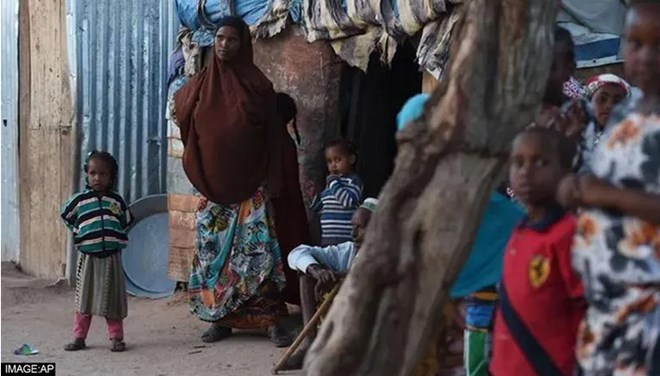
Monday February 21, 2022

As Somalia encounters its worst drought in decades, displacement camps in the nation have been facing severe pressure since over 300,000 individuals have left their houses in search of food and water so far this year.
According to The Guardian, following three consecutive unsuccessful monsoon seasons since October 2020, which have ravaged crops and cattle, residents have been traveling kilometres to the refugee camps, which are already housed with refugees fleeing the country's ongoing war.
Over 2,400 such Somalian settlements exist in the nation, all of which are in desperate need of supplies.
Referring to the condition, the United Nations (UN) has cautioned that Somalia is “staring at a potential catastrophe” this year. As per the UN, over a quarter of Somalia's population requires immediate food assistance.
Acute malnutrition has affected around 1.4 million Somalian children under the age of five. As per The Guardian, the situation is predicted to worsen, with no rain forecast until April.
Earlier in the month of December 2021, Adam Abdelmoula, the humanitarian coordinator for the United Nations Assistance Mission in Somalia (UNSOM), described the African country's drought as "one of the most complex humanitarian crises in the world,” Associated Press reported.
In addition to this, Mohamud Mohamed, who traveled 80 kilometres to a displacement camp in Luuq, in southern Gedo province, stated, “This camp is overcrowded, with no access to food, water and healthcare. We have not had water for one week.
The truck that used to bring us water did not come,” according to The Guardian. Mohamed went on to say that people in the displacement camp eat only one or two meals a day, while, drinking tea has also been counted as a meal.
During a trip to the Bardhere camp in Gedo, Islamic Relief, an international aid agency, stated its workers saw people living in makeshift shelters with limited food and water, with several on “the brink of death”. Numerous fatalities, which included an infant, were reported during their stay, according to the organisation.
According to The Guardian, Aliow Mohamed, disaster response manager at Islamic Relief, explained, “The camps are the only place they know there is help, so if all of your food is gone and livestock is dead you go there.”
He further noted that due to this, pressure has been increasing in the displacement camps. Indicating the refugee camps, the manager said, “As they grow more crowded, there are more issues with hygiene, water supply and protection.”
Meanwhile, the famine warning systems network has predicted that April's rainfall would be below average, raising the risk of famine, according to humanitarians.
As per UN refugee agency data, the majority of the 317,000 individuals have relocated since January due to drought. Internal displacement has currently affected approximately a fifth of Somalia’s population. According to Save the Children, nearly 700,000 cattle died in two months last year.
According to the UN, some localities have lost 80% of their cattle. In spite of these setbacks, only 2% of a $1.46 billion humanitarian plea for Somalia which was launched in December has been funded, The Guardian reported.